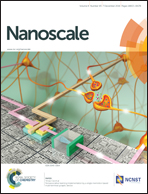The nanotipped hairs of gecko skin and biotemplated replicas impair and/or kill pathogenic bacteria with high efficiency
Abstract
We show that gecko microspinules (hairs) and their equivalent replicas, bearing nanoscale tips, can kill or impair surface associating oral pathogenic bacteria with high efficiency even after 7 days of repeated attacks. Scanning Electron Microscopy suggests that there is more than one mechanism contributing to cell death which appears to be related to the scaling of the bacteria type with the hair arrays and accessibility to the underlying nano-topography of the hierarchical surfaces.


 Please wait while we load your content...
Please wait while we load your content...